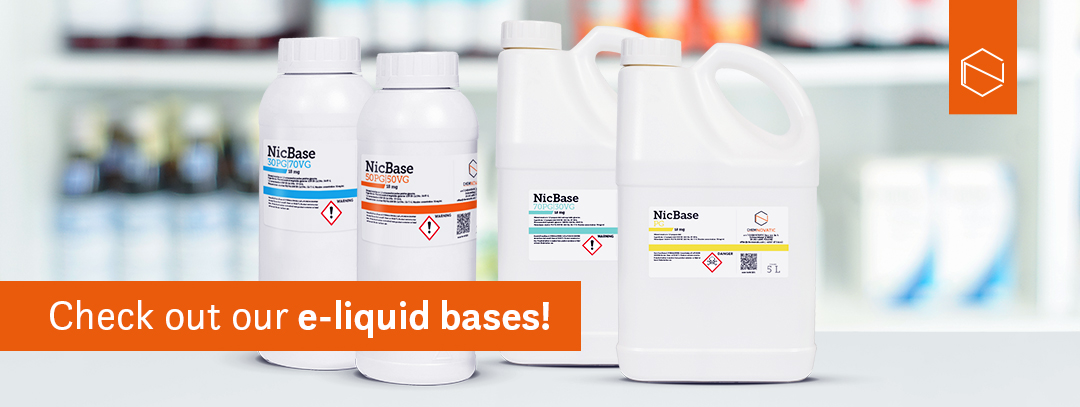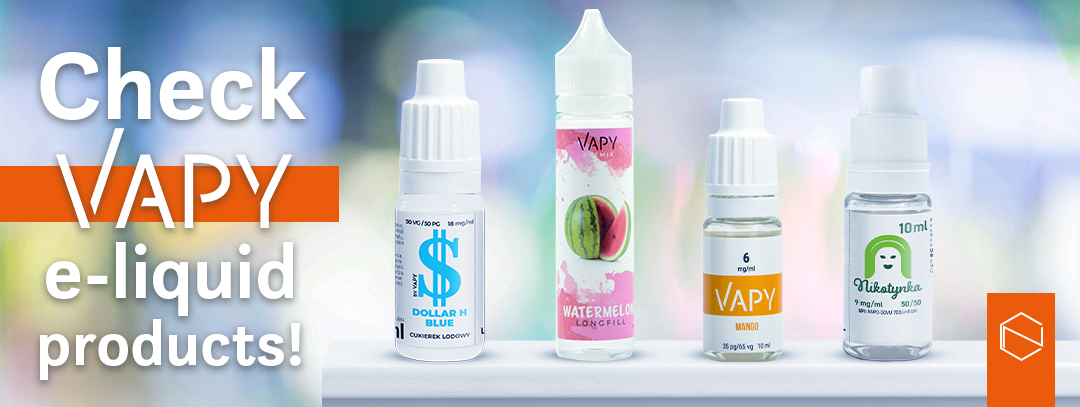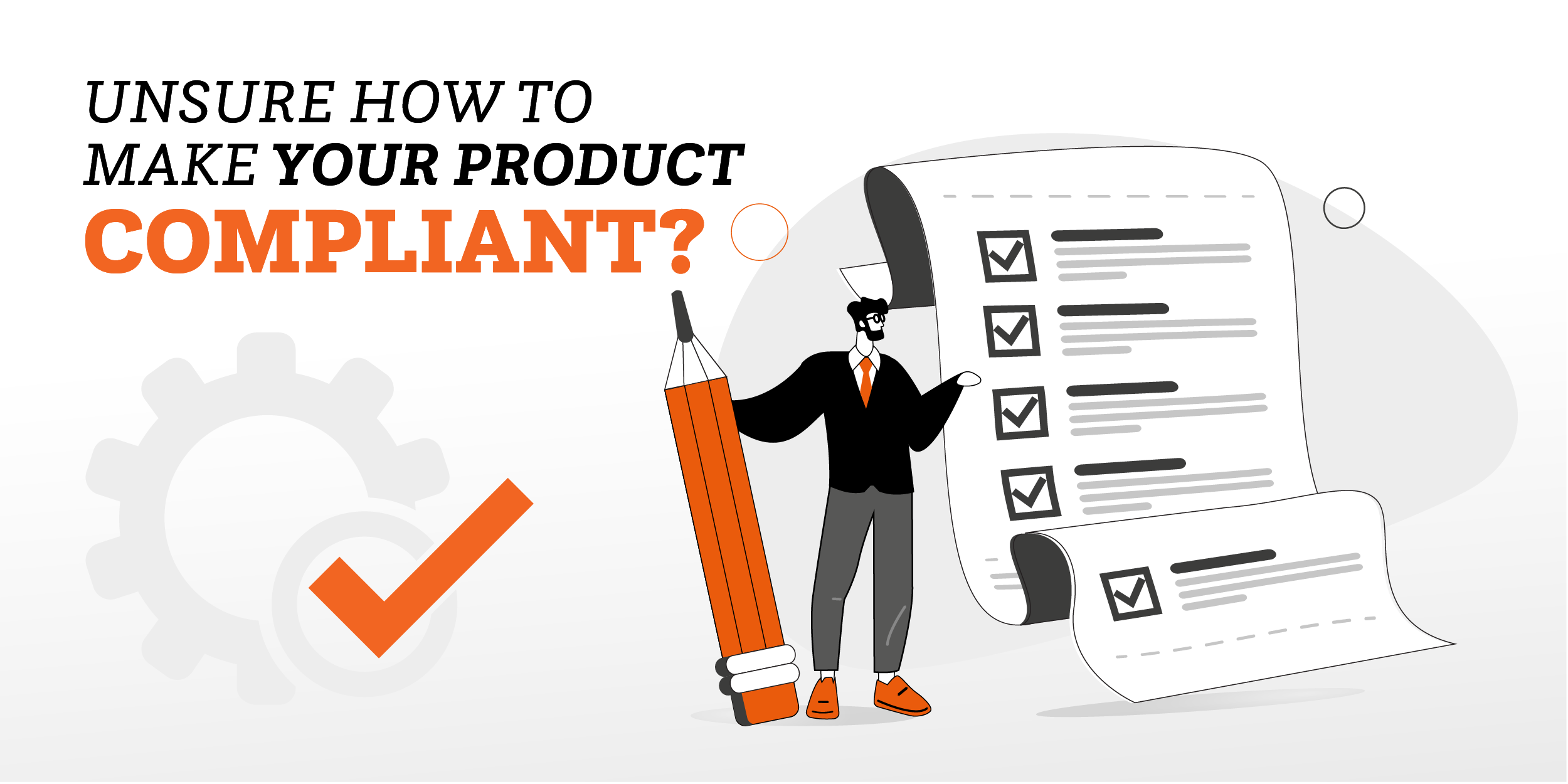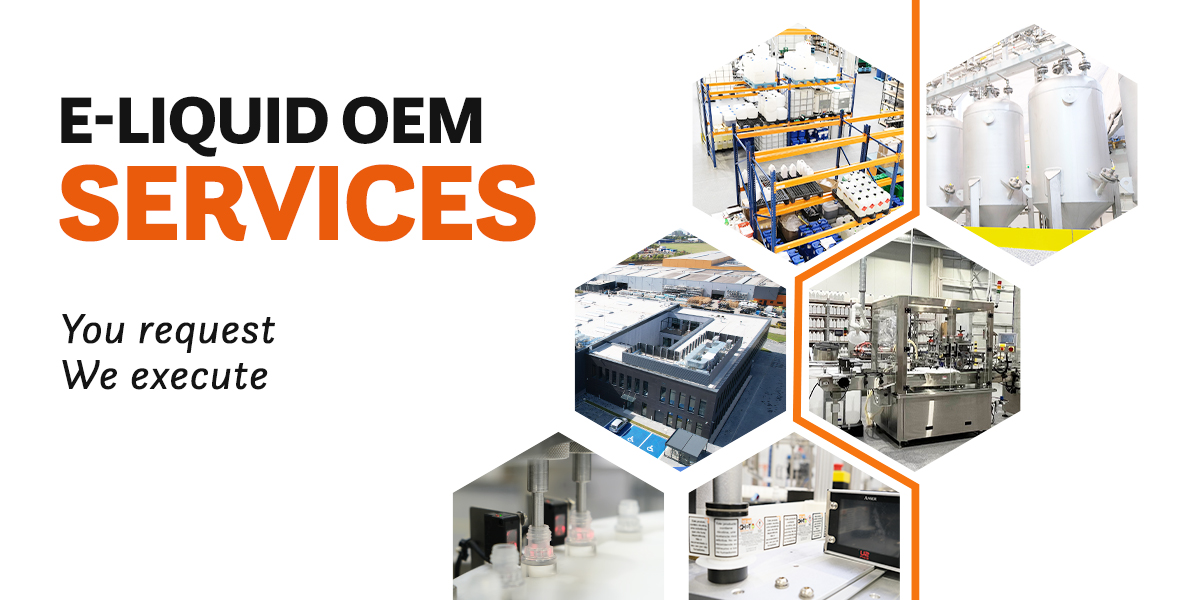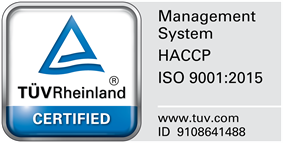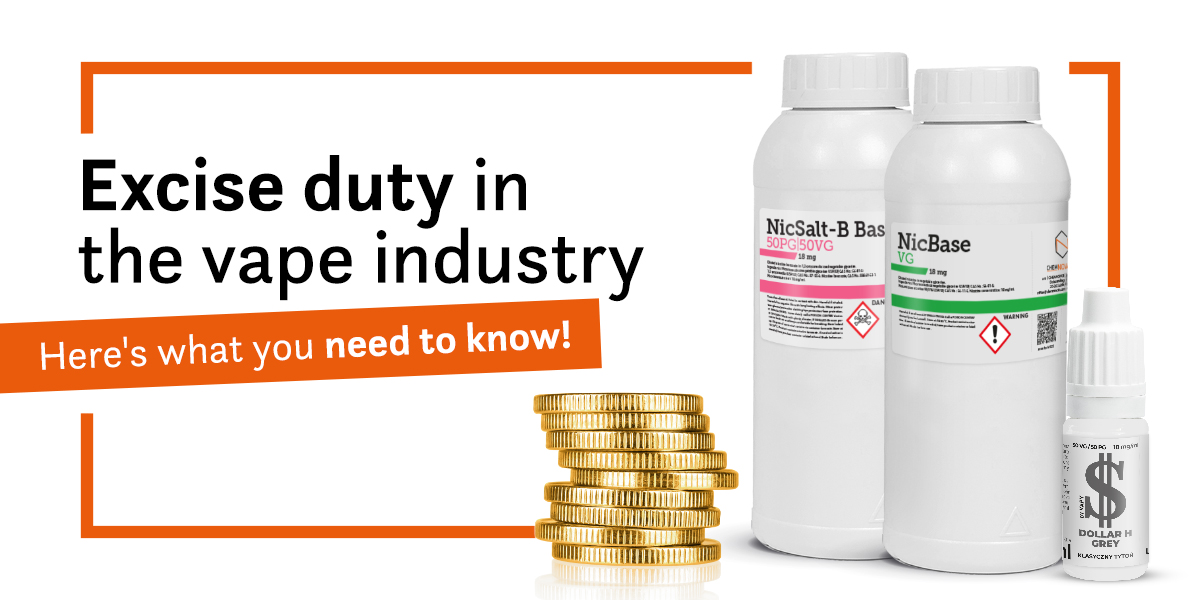
The e-liquid excise duty in vape industry already applies in 15 member states of the European Union, and the list is still growing. Simultaneously, the European Commission is working on a new TED Directive (Tobacco Excise Directive), which aims to unify the excise duty in all the member states of the EU. In Poland, where our HQ is located, the excise duty has been present since 1 October 2020.
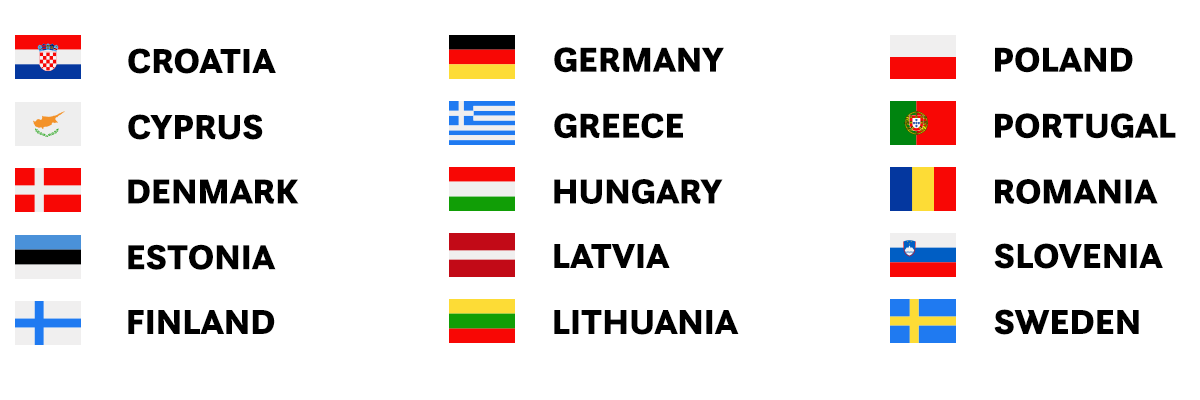
What is excise duty?
The excise duty (commonly known as excise) is an indirect tax. It can be assigned to another entity, a natural person. It is usually imposed on the manufacturer or a supplier, who, in turn, transfers it to the last link of the supply chain – the customer.
What is more, the excise tax is not universal, it applies only to selected groups of products. Moreover, if a group of products is subject to excise duty at the European Union level, then we are talking about harmonized excise goods. These include:
- energy products
- electricity
- alcohol drinks
- tobacco products
States may additionally tax excise goods other than those listed above. An example is Belarus, which imposed excise duty on goods such as shoes, or Poland, where excise duty applies to cars.
Harmonized products
Excise goods regulated by the European Union become the so-called harmonized products. If the TED directive enters into force, vape products will also become harmonized.
Who decides if a product is harmonized?
Whether a given product is harmonized is decided jointly by the Member States of the European Union. If a product receives this status, it means that it is now subject to the EU’s common excise duty system and a set of European regulations.
What is product harmonization about?
Harmonization applies to all economic activity related to a given product. Not only manufacturing, but also trading, distribution, and storage.
Excise duty in the European vape industry
Excise products in the vape industry
Each excise good (including raw materials – nicotine bases used in the manufacturing processes) should be manufactured in a tax warehouse, and its movement should take place between tax warehouses with appropriate security.
Raw materials for e-liquid manufacturing that are subject to excise duty are:
Retail e-liquid products that are subject to excise duty are:
What is the current situation of the European e-liquid market?
The current excise situation of the European e-liquids market is very dynamic. Almost every month, there are new news and announcements of changes regarding excise duty in various countries.
Tobacco Excise Directive (TED) – what is it?
Tobacco Excise Directive (TED) – an excise directive on tobacco products that is also about to cover products from the vape industry. The goal of TED is harmonization – the introduction of uniform, excise taxation of products and the prevention of tax crimes (i. e. tax evasion) in the territory of the European Union.
The proposal for the TED Directive is yet to arrive – it is expected in 2023.
Excise duty aside from the Tobacco Excise Directive
Although TED’s entry into force is on the horizon, many countries are already implementing or increasing excise taxes on vaping products. Let us recall that excise duty is a national tax.
The most recent example is Bulgaria which implemented excise taxation, beginning on 1 March 2023. It will be 0,18 BGN / ml and will increase, respectively, on 1 January 2024, and 1 January 2025.
Excise duty is not the only aspect that has recently been regulated in the vape industry. In January this year, Belgian authorities announced that from July 11, vaping devices will be forbidden from containing additional elements, such as LED lights, and the names of flavors on the labels will have to be contained in 1 word.
For more information, see our e-liquid regulations tab.
Tobacco Excise Directive and the future
Excise duty is an indirect tax, and its harmonization at the level of the European Union means that each Member State will have to introduce excise duty on a given group of products. However, the excise amount does not have to be the same in each country.
If the TED directive enters into force, the issues of transport will most likely change. Products will be moved between tax warehouses in the EMCS computer system under the excise duty suspension procedure (without excise duty paid). It relates to domestic trade, trade between EU Member States, and within the territory of the European Community – as a part of export and import.
Specific rates for these products will also be set, which will facilitate the functioning of many enterprises. Of course, the greatest simplification would be the complete absence of excise duty in all countries, but since such a scenario is not realistic, for companies operating in countries where excise duty is in force and for their clients, the introduction of harmonized excise duty in the EU will, in some aspects, actually facilitate their functioning.
How to function safely in the vape industry?
In Poland, the excise tax on vape products has been in force since October 1, 2020. From that day on, to legally produce products such as e-liquids or nicotine bases, a tax warehouse or prepayment of excise duty is required.
Given these two possibilities, before we answer the question of how to operate in the vape industry legally, let’s clarify these two issues.
Prepayment of excise duty
Prepayment of excise duty is an option to pay excise duty when the manufacturer does not have a tax warehouse. It requires many formal activities and recording of the creation process.
Tax prepayment consists of paying the tax before the manufacturing of products, adequate to the rate of excise duty that must be paid for a certain number of goods manufactured. For example, if a manufacturer wants to make 100 units of e-liquid, they must first pay excise duty on that number of products, before they can legally produce them.
For many companies, prepayment of excise duty is an unattainable solution, because the more goods one needs to produce, the more prepayment must be made by the manufacturer. What does this mean in practice? Freezing large sums of money and disrupting the company’s financial liquidity.
Tax warehouse
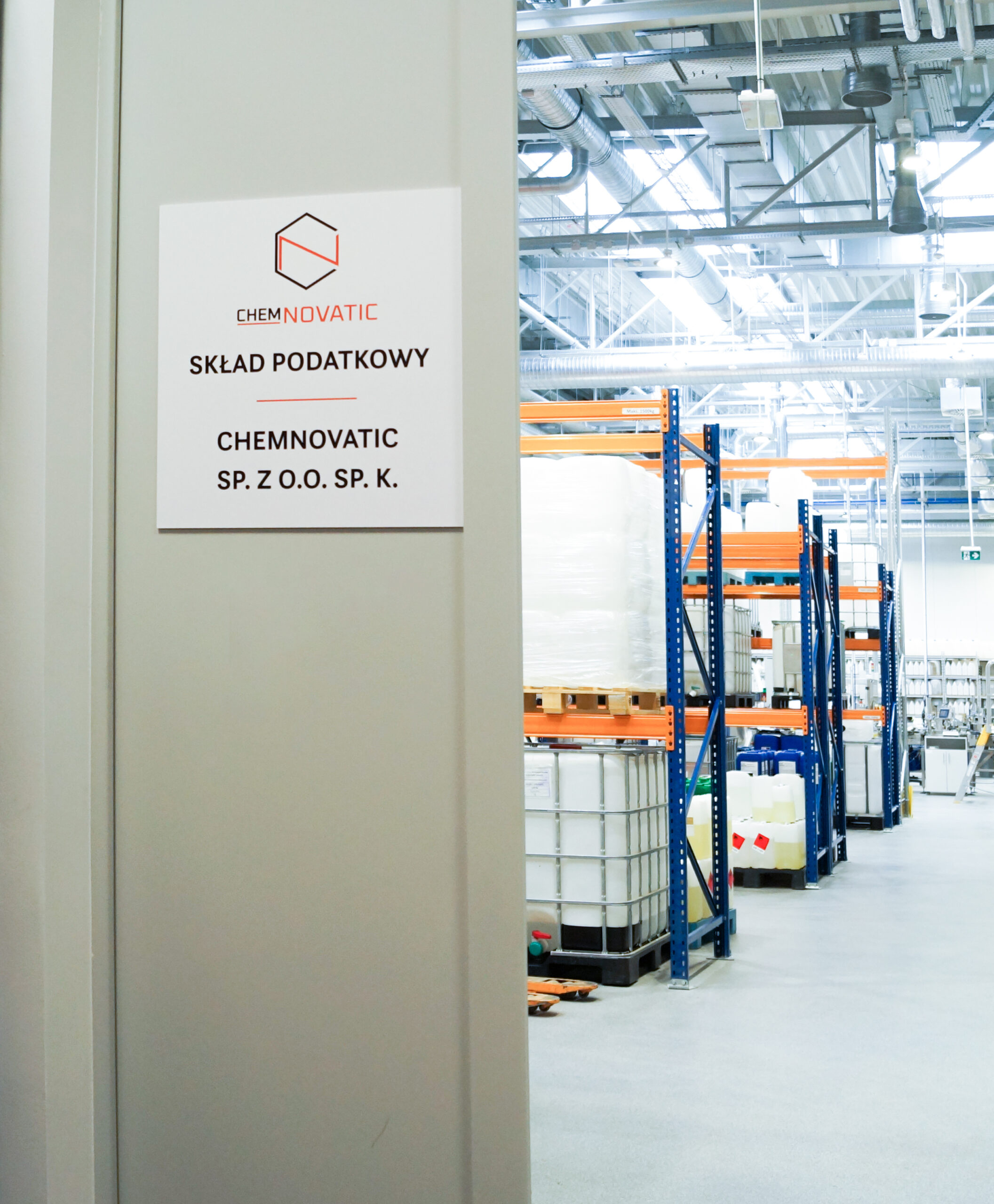
A tax warehouse is an area approved by the state administration where one can legally manufacture excise goods, store excise goods, and move them between tax warehouses – following the law while meeting all quality and technical requirements imposed by state authorities.
If the manufacturer of vape products has their tax warehouse, they can produce excise goods themselves without the need to make a prepayment. Let us state, however, that the sum of the values of the products produced and stored in one day cannot exceed the financial guarantee that the tax warehouse is covered with.
Transportation of excise goods
What are the differences in the transport of an excise product to a country with an applicable excise duty and to a country where this excise duty does not apply? The movement of the product is the same, although there are slight nuances.

Sales of excise goods from a country with excise duty:
- Sales to countries where the excise duty is in force – in this situation, after shipping, the customer signs the receipt document and thus releases the manufacturer’s financial security in the form of suspended excise duty in his country. From now on, the customer is responsible for the excise tax on the purchased goods – following the requirements imposed by his country. Check the list of excise duty countries here.
- Sales to countries where the excise duty does not apply – in this situation, after the delivery of the goods, the customer also signs the receipt document and thus releases the manufacturer from the security in the form of suspended excise duty. The difference is that there is no excise tax in the customer’s country, so they no longer have any legal and financial obligations concerning the goods received.
International supply chain? Take care of its safety!
If your supply chain is international and you purchase goods in countries with excise duty, you need to know that each excise product should be manufactured in a tax warehouse, and its transportation should take place between tax warehouses with adequate financial security.
If your supplier does not have a tax warehouse, this means that…
- They work against the law
- You are purchasing an illegal product and this may result in legal consequences
- The security and continuity of your orders are at risk – the shipment of your order may be suspended
Even if there is no excise duty in your country, you may be asked to testify as a witness in penal and fiscal proceedings.
Why is it important?
Since January 2023, we have been observing increased excise duty inspections on the Polish vape market. More and more companies turn to us for help in matters related to excise duty because they want to be sure that their supply chain is formally and legally secured.
Chemnovatic – a business partner you can trust
When you choose to purchase from Chemnovatic, rest assured that you are engaging with a fully compliant manufacturer possessing all requisite licenses, infrastructure, and a seasoned team with extensive experience in excise duty matters.
Our expert specialists boast a profound understanding of e-liquid and raw material trade within the European Union. Moreover, they have successfully obtained numerous individual tax interpretations and emerged victorious in the majority of legal disputes, facilitating the legal circulation of excisable goods within the Polish vape industry.
By collaborating with Chemnovatic, you mitigate financial and legal risks, ensuring the acquisition of a premium-quality, legally compliant product.
If you have any questions, please contact us at sales@chemnovatic.com.
Let’s grow your business together!
Subscribe to our newsletter and receive a free access to our e-mail course on raw materials for e-liquids production (and more!).
No spam, only valuable content we promise to send you.






